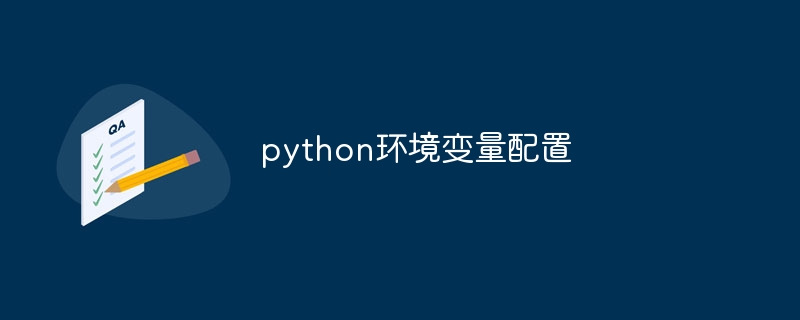Python environment variable configuration steps: 1. Open the Python interpreter; 2. Import the os module; 3. Set the environment variables; 4. Get the environment variables.

#To configure environment variables in Python, you can follow the steps below:
1. Open the Python interpreter. You can open the Python interpreter by typing python at the command line.
2. Import the os module. Enter the following code in the Python interpreter:
import os
3. Set environment variables. You can use the os.environ property to set environment variables. For example, to set an environment variable named MY_VAR, you would use the following code:
os.environ['MY_VAR'] = 'my_value'
If you want to set multiple environment variables, you can use a dictionary to associate the variable names and values, and then pass the entire dictionary to os.environ:
os.environ.update({
'VAR1': 'value1',
'VAR2': 'value2'
})4. Get environment variables. You can use the os.environ property to get the value of an environment variable. For example, to get the value of an environment variable named MY_VAR, you can use the following code:
my_var_value = os.environ['MY_VAR']
If you want to get the value of multiple environment variables, you can iterate over the os.environ dictionary:
for key, value in os.environ.items():
print(f'{key}={value}')5. If you are using a Python virtual environment, you can set environment variables in the virtual environment. For example, to set an environment variable named MY_VAR, you would use the following code:
import os # 设置环境变量 os.environ['MY_VAR'] = 'my_value' # 运行Python代码 python my_script.py
This will set the MY_VAR environment variable in the virtual environment and run the my_script.py script.
The above is the detailed content of python environment variable configuration. For more information, please follow other related articles on the PHP Chinese website!